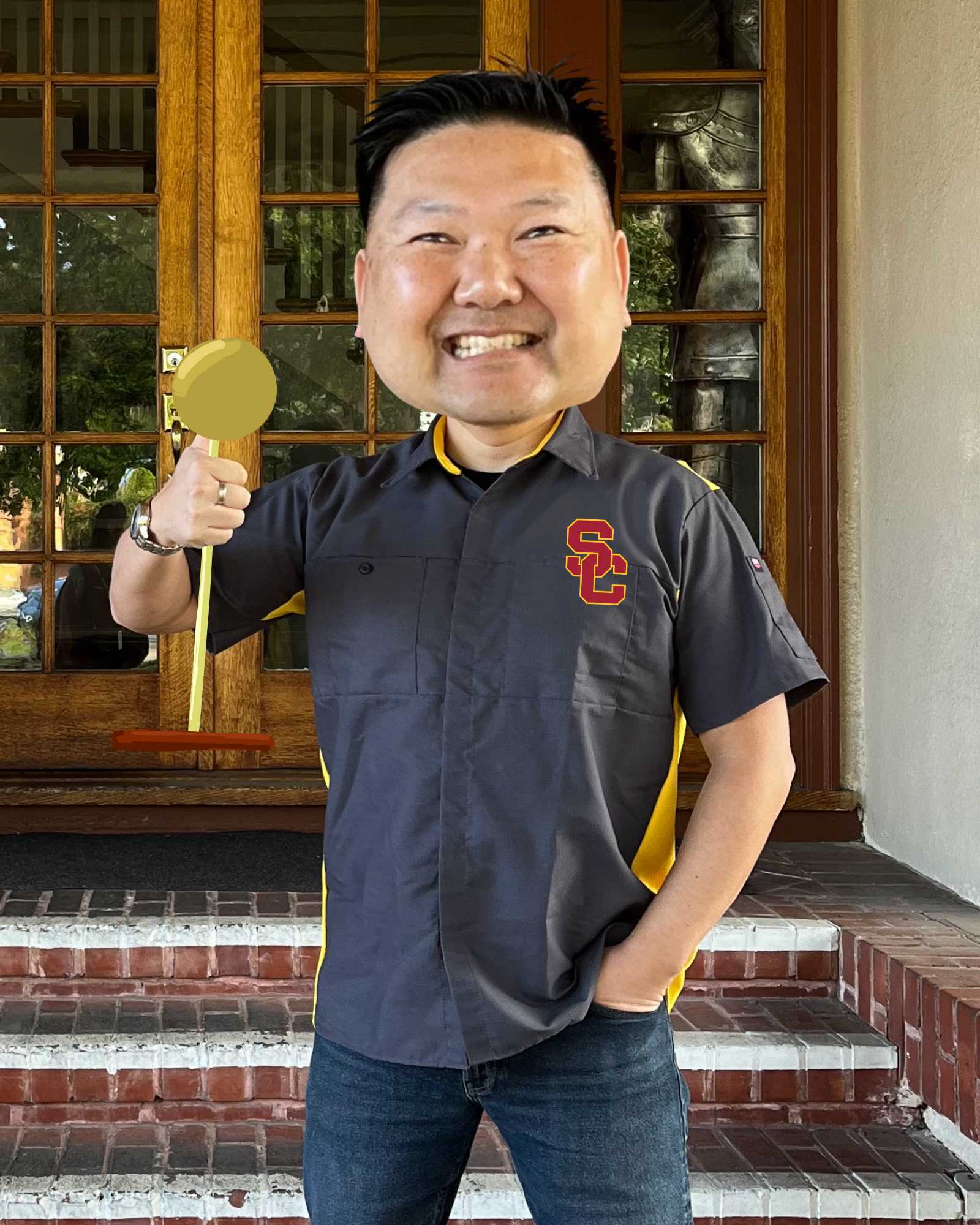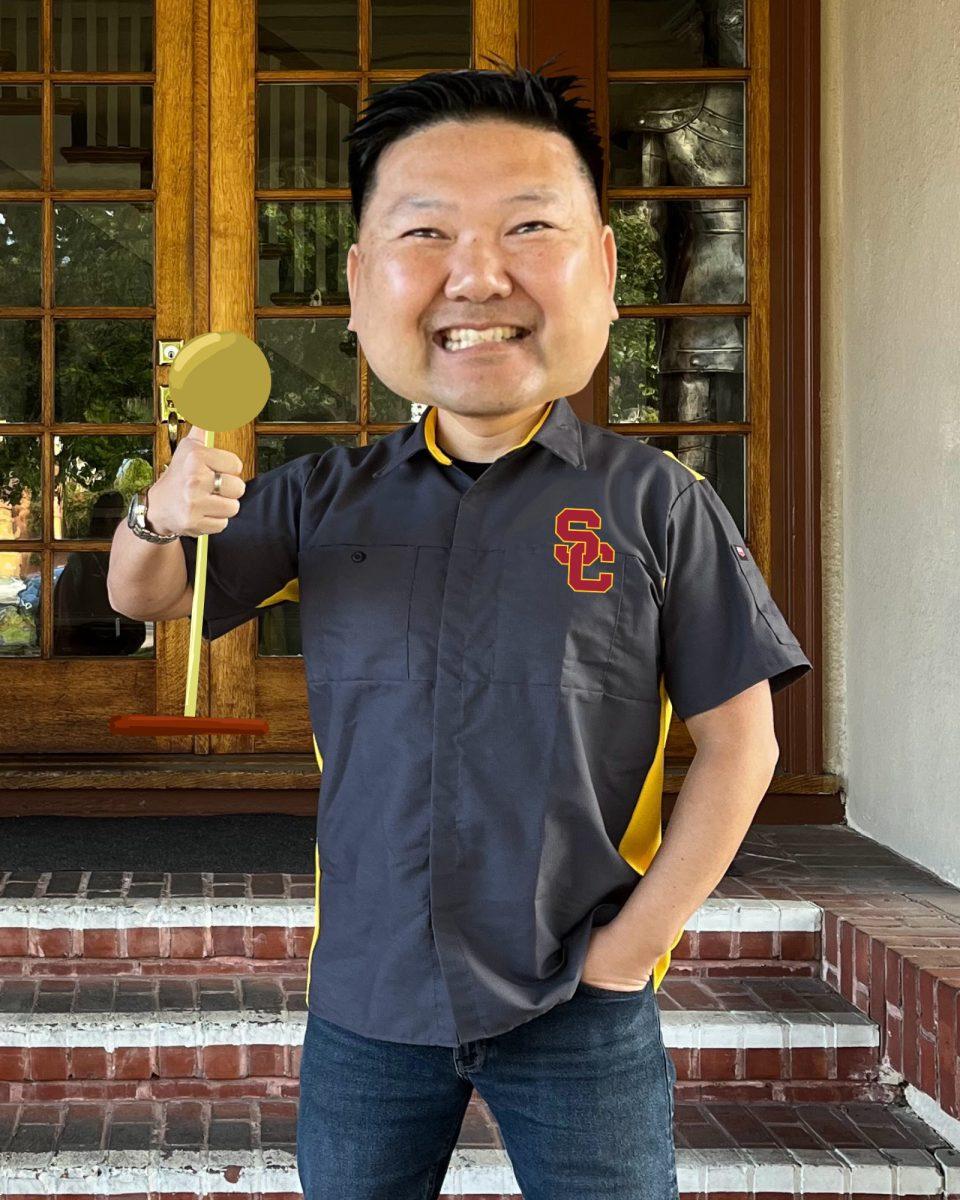by Carol Donnell, undercover contributing writer | April 15, 2024

Last Friday night, on the hoppin’ outskirts of Sacramento, all eyes were riveted on the makeshift stage in the front of the El Dorado Room of the Roseville Best Western. The earlier honors had been distributed to various writers of fanfiction, but now the time had arrived for the most highly regarded award of the evening: the Notable Achievement for Justifying Star Wars in the Light of Actual Science (the NAJSWLAS).
No student who has spent time in Room 1210 will be surprised to learn that the winner of the coveted NAJSWLAS was our own Mr. Chihiro Ikezi, a man as renowned for his love of Star Wars as for his hat size.
“Yo,” Ikezi said when this reporter caught up with him at a nearby Dairy Queen, “check it! This is the NASWJLAS! It’s the big time, dude!” Then, gripping the award tightly at its base, his voice became motto: “They don’t just give these to anyone, you know.”
His claim is self-evident. The NSAWLJAS trophy itself is impressive. First given in 1965, it is a sight to rival the Stanley Cup. Rising sixteen inches from a mahogany plastic base is a thin gold-colored column, upon which sits a fist-sized gold-colored ball that, despite looking like a soccer ball, is actually a representation of the planet Alderaan in the desperate moments before it exploded into tiny bits due to the action of an especially powerful laser of some sort.
“You see,” Ikezi explained, “it looks like a soccer ball, what with the truncated icosahedron, but it’s really Alderaan. Everyone knows that Alderaan’s molten core is made of gadolinium which, under pressure, creates that specific pattern of fragmentation. You know, the one that looks like a soccer ball.”
But as impressive as the trophy is the scientific work that can earn it. Ikezi’s competitors for the award produced riveting scientific papers—work that will be read for decades. Mon Mothma, a Caltech physicist, showed that the orbit of the Forest Moon of Endor was deteriorating and that, eventually, the New Republic would have to relocate the Ewoks. Another notable submission came from Jek Porkins, an engineer with a multinational architectural firm. Porkins showed that the ventilation shaft on the original Death Star must have been made from a composite material that contained at least 20% yttrium.
But Ikezi’s work stood out even amongst these exciting competitors.
“Ever since I was a student at USC,” Ikezi said, “I’ve been obsessed with the cantina scene in A New Hope.” That early obsession focused on a dramatic controversy: who shot first, Greedo or Han Solo? This is a question to divide the fanboys of the Star Wars universe.
“I was torn,” Ikezi confessed. “I couldn’t keep the idea—the idea of both of them shooting first—in my mind at the same time. Which is really saying something, since my head is so large that I could fit an Imperial-class Star Destroyer in it.”
Ikezi laughed easily at himself, and we fell in love with him all over again.
“So, basically,” he continued, “I showed how this was just a special case of Schrödinger’s Cat. At the level of quantum physics, both of them shot first!”
Well done, Ikezi! No wonder he won the NLAJSWAS! Cynics might reply that Ikezi’s knowledge of physics is suspect. He talks a good game, they might say, about inertia and forces and stuff like that, but it’s hard to tell because his in-class demonstrations frequently involve mockery of other, more dignified teachers who are above such childish back-and-forth.
When confronted with such cynical criticism, Ikezi seemed surprised. “That’s ridiculous,” he said. “I’ve been teaching physics for many parsecs, so I know what I’m talking about.”
Indeed he does. That’s canon.





































































